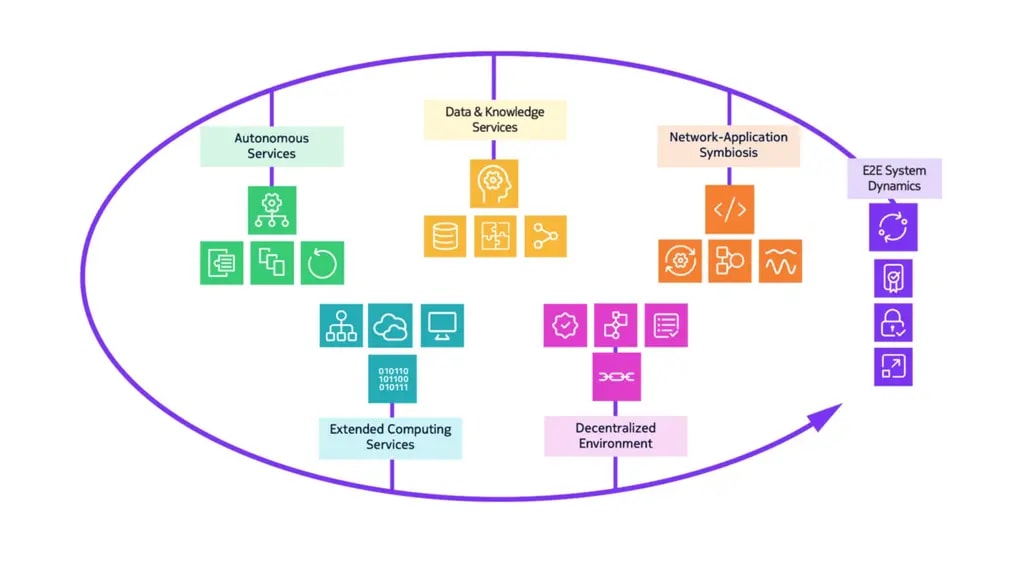UNIX transformed computing; Now it’s UNEXT’s turn to transform networking

In 1969, Bell Labs gave the world UNIX, the operating system software that shaped modern computing. Now Nokia Bell Labs is preparing to upend the software world again with a new network systems architecture called the Unified Networking Experience, or UNEXT.
The parallels between UNEXT and UNIX aren’t merely in their names. We believe that UNEXT will have the same lasting impact on networking that UNIX had on computing. UNEXT will flatten the many tiers of complexity that have come to define communications today, while extending the reach of networked systems by breaking down barriers that prevent those systems from interoperating.
UNEXT will be fundamental to shepherding in the 6G era. It will seamlessly link the many and disparate systems necessary to fuel the applications of the future, from autonomous robots and vehicles to the metaverse and XR. By bridging the gaps between vendors, standards and operators, UNEXT will be key to fusing our digital and physical realities.
What is UNEXT?
At the fundamental level, UNEXT is a self-managing, interactive operating system that smoothly and securely supports users and applications with resources spread across heterogenous owners and execution environments. In short, UNEXT will make the process of securely integrating anything with the network a simple task.
Over many decades, networks simultaneously have become enormously complex and incredibly diverse. Every time a new application has emerged, the communications industry has created a new layer of software, taking advantage of new technologies such as virtualization, AI, edge computing, blockchain and open interfaces. Meanwhile, the number of interconnections between network infrastructure and system software has grown exponentially, driving the need for constant third-party integration. As we enter the metaverse era, this complexity is quickly spiraling out of control. Any individual metaverse application needs to link up with dozens of different systems in order to function.
UNEXT is simplifying this chaos by taking a critical page from the UNIX book. UNIX is famous for its simple design, which is our guiding principle in realizing UNEXT. Every element of the network – whether a device, application, microservice or access node – is self-contained, having all the properties it needs not only to function independently, but also work with other elements. As a result, UNEXT becomes an autonomous networking system that enables cross-stakeholder service provisioning and execution.

A good analogy would be how humans function in a society. Individual people are self-sufficient. We all have the capacity to function on our own, whether it’s reading a book, playing an instrument or making individual decisions about our lives. But we also have the innate ability to collaborate to achieve even greater things. People can work together to build a school, they can form a band, or they can even establish a government. UNEXT will ingrain these same principles into the network, making every element a self-sufficient entity that is capable of seamlessly cooperating with every other element of the network.
To describe UNEXT’s potential, let’s take an example that illustrates the true complexity of metaverse applications. Imagine a group of friends meeting in a field to play an XR-enhanced game of soccer. To get the match going properly, they would need a virtual stadium overlay of their surroundings, a virtual referee and even a virtual goalkeeper. The problem is everyone playing has a different mobile service provider, they all use different XR headgear from different manufacturers, and they all subscribe to different XR application services.
Putting all of these players into the same XR game might seem impossible, but here’s where UNEXT’s self-managing entities come to bear. Every device, application and network service would negotiate with one another, linking the players across operators and navigating the interfaces between applications. UNEXT could establish quality of service across every connected device in the match, guaranteeing the capacity and low latency necessary to play a real-time game. UNEXT could also designate local edge cloud resources to the match, compensating for any limitations of the players’ individual XR headsets.
These are the types of scenarios that will increasingly define network services of the future. If the metaverse is to truly supplant the internet as our primary information, communication and collaboration tool, then our networks must evolve.
The path to UNEXT
UNEXT is the result of years of focused work by the Bell Labs network systems and security research team. We feel it’s time to share the results of that work. Nokia has already begun integrating elements of UNEXT into Nokia product portfolio, and over the next year we plan to share more details about its underlying technologies.
We have launched a new webpage on Bell-Labs.com that details what UNEXT can do and why a network-as-an-OS architecture is critical for our future.
The legacy of UNIX looms large here at Nokia Bell Labs. We hope to build on that legacy with UNEXT. Just as UNIX revolutionized computing, we feel that UNEXT could reshape the network for a new era of communications.
